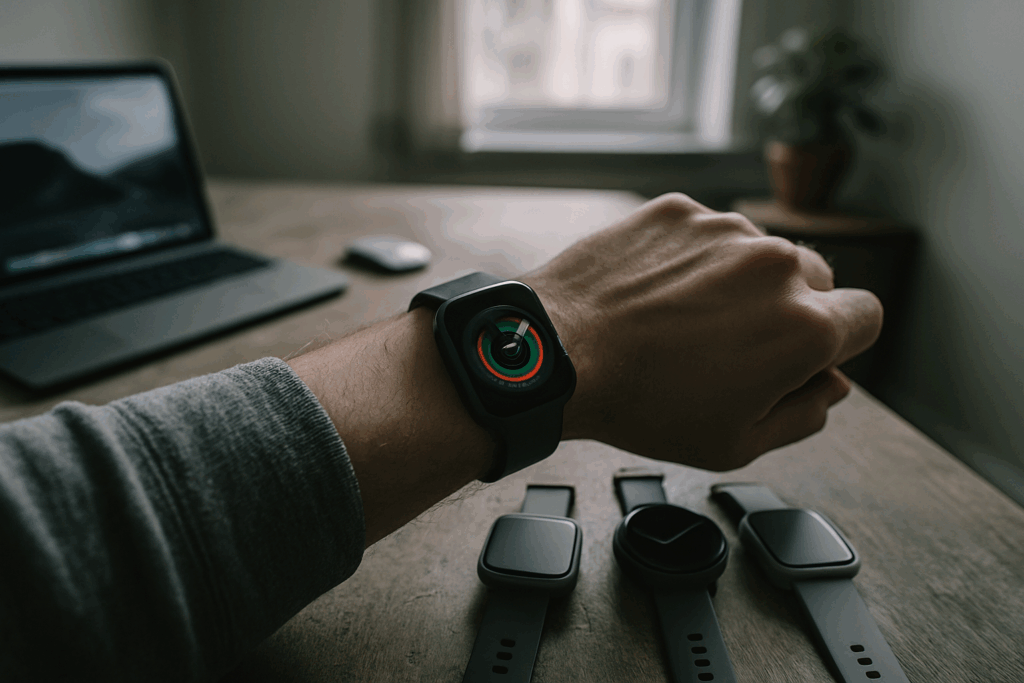Introduction
Vlogging didn’t fade when short-form exploded or when algorithms got fickle. It adapted. While other formats had their fifteen minutes, vlogging stayed steady by evolving at the edge of authenticity and connection. In 2024, it’s not just surviving—it’s gaining traction again, reshaped by platform shifts, smarter tools, and a sharper focus on niche content.
The game is different now. Audiences are more selective. Platforms reward creators who show up with intention and consistency. It’s not enough to have a camera and charisma—you need tact, timing, and an edge. Whether it’s repackaging long-form into stacked storylines or using AI to streamline editing without losing your voice, 2024 demands creators be nimble and real.
Why should vloggers care? Because the new rules favor those who are prepared. The landscape is faster, the competition is sharper, but the rewards—for those who adapt—are bigger than ever.
Samsung Galaxy S24 Ultra
The Galaxy S24 Ultra isn’t just chasing specs — it’s building a case for being the most well-rounded vlogging phone of 2024. Powered by the Snapdragon 8 Gen 3 chip, it handles gaming, editing, and multitasking without breaking a sweat. It’s not just fast; it’s consistent, even under pressure.
Where it really shines, though, is the camera. The 200MP main sensor isn’t just about huge numbers. With Samsung’s AI image processing, you’re getting sharper low-light images, better stabilization, and smarter autofocus. The periscope zoom also holds up well when you’re trying to grab b-roll from a distance without losing detail.
Then there’s the S Pen. Not every vlogger will use it, but for creators who storyboard scenes, grade thumbnails, or cut footage on the go, it’s a quiet productivity win. It turns the S24 Ultra into more than a camera—it’s a legit creative tool.
If your workflow demands power, flexibility, and a camera system that doesn’t crumble in mixed lighting, this phone is hard to overlook.
Benchmark Scores vs. Real-World Performance
The Usual Benchmarks
When it comes to measuring phone performance, the same names always surface:
- Geekbench: Used to gauge CPU performance through single-core and multi-core tests.
- Antutu: Offers a more comprehensive performance score that includes CPU, GPU, memory, storage, and UX tests.
- Gaming Stress Tests: Tools like 3DMark or in-game FPS consistency tests help evaluate how phones perform under graphical load.
These benchmarks give users a high-level look at raw power. However, scores can be misleading if evaluated in isolation.
More Than Just Numbers: Heat and Throttling
Powerful components can generate a lot of heat, and that causes the device to throttle performance to keep temperatures in check.
- Thermal throttling reduces performance over time to avoid overheating.
- Heavy workloads spike temperatures quickly, especially in thin or passively cooled phones.
- Sustained performance matters more than peak numbers in real-life usage.
Understanding how a device handles long-duration tasks is essential for gamers, editors, and multitaskers who push their devices hard.
What Benchmarks Don’t Show
Benchmarks are synthetic. They offer a snapshot of max capabilities but don’t reflect real-world behavior in everyday usage.
- A phone may score high but stutter during app switching or video calls.
- Battery optimization, software efficiency, and thermal design matter just as much.
- Reliability over time often matters more than a top-tier benchmark score.
If you’re a power user, consider real-world testing like multitasking comparisons, app launch speed, and battery endurance throughout an average day.
Bottom Line
Benchmarks are useful starting points, but they only tell part of the story. For most users, daily performance, consistency, and thermal management are better indicators of how a phone will perform long term.
OnePlus 12
OnePlus is still playing the flagship killer game, except now it feels more like a flagship that forgot to charge extra. The OnePlus 12 packs top-tier specs — Snapdragon 8 Gen 3, a stunning OLED panel, and camera hardware that finally holds its own. But it’s the software and speed combo that keeps longtime fans interested. OxygenOS is clean, fast, and now more integrated with AI-assisted features without getting bloated.
Performance-wise, it keeps pace with just about anything out there. Gaming, multitasking, and daily use feel snappy without the heat or battery drain drama. Speaking of battery — 100W fast charging means you can go from dead to nearly full in around 25 minutes. No wireless charger panic needed.
In a year where flagships keep creeping toward four figures, OnePlus still finds a sweet spot between power and price.
Smarter Tools, Sharper Screens, Stronger Battery
2024 devices are picking up some real steam under the hood. AI assist tools are no longer just in your apps. They’re integrated into Android and iOS, helping with on-device editing, smart auto-captioning, and even real-time shot suggestions while you film. Vloggers have more creative horsepower without needing third-party apps.
Screens are also getting impressive. LTPO OLED displays now support variable refresh rates, so your device only cranks up to 120Hz when it needs to. That saves juice without sacrificing smooth visuals. Peak brightness has also improved, which helps a lot for creators filming outdoors or reviewing footage in bright environments.
And then there’s battery. Fast charging isn’t just fast anymore—it’s near-instant. Coupled with smarter battery management, creators can shoot, edit, and upload for hours without stressing over remaining power. The tech is keeping up with the hustle, and that’s a shift creators should notice.
Spec Sheet vs. Real-World Performance
Specs look great on paper. But vloggers know the truth lives in the field. A camera boasting 8K, 240fps, and ultra-stabilization doesn’t mean much if the battery drains in half an hour or the colors look flat straight out of the box. In 2024, performance under pressure is the real gold standard. How quickly gear powers up, how it handles in variable light, and whether it overheats during long shoots—all of it matters more than headline specs.
Then there’s the bigger picture: the ecosystem. Some creators swear by Apple for seamless syncing, others stick with Sony for reliable autofocus and footage that grades well. Software support is part of that equation. Update cycles, third-party plug-ins, mobile app control—things that save time or cut friction end up being just as valuable as raw features.
Finally, the budget question. Spending more doesn’t always mean better content. A solid mid-range camera with a smart mic setup can outperform a top-tier kit in the hands of someone who knows how to shoot. The game isn’t about maxing out credit cards for gear. It’s about knowing which features let you move faster, stay flexible, and stay true to your voice without breaking the bank.
Every top-tier phone in 2024 has its edge. Some shoot cinematic video in low light. Others crunch edits faster or have unbeatable battery life for all-day vlog missions. There’s no one-size-fits-all anymore, and that’s a good thing.
Picking your phone comes down to how you use it. If you’re documenting daily life on the fly, pocket size and fast autofocus might matter more than raw power. Long-form vloggers tackling B-roll-heavy edits may care more about processing speed, color accuracy, and heat management.
Ignore the spec sheet wars—they don’t tell the whole story. Focus on what helps your creative process, not what looks best on paper.
Want to cover the other end of the mobile content pipeline? Check out this bonus read: Tablet Showdown: iPad vs Android Tablets in 2024.
Phones are tools. Choose the one that works hardest where it matters—for you.


 Isaac Lesureneric is a tech author at gfxrobotection focusing on digital security, automation, and emerging technologies. He shares clear, practical insights to help readers understand and adapt to the rapidly changing tech world.
Isaac Lesureneric is a tech author at gfxrobotection focusing on digital security, automation, and emerging technologies. He shares clear, practical insights to help readers understand and adapt to the rapidly changing tech world.

